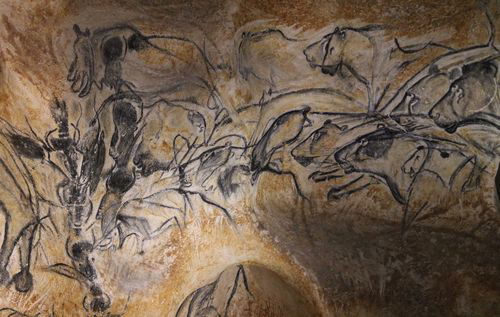Ancient cave artists starved themselves of oxygen while painting

Ancient cave decorations can be breathtaking to behold, but new research claims the artists may have been starved of oxygen when they were painting.
Analyzing cave paintings from the Upper Paleolithic period, from around 40,000 to 14,000 years ago, researchers from Tel Aviv University found that many were located in halls or narrow passages deep inside cave systems navigable only with artificial light.
The study focuses on decorated caves in Europe, mostly in Spain and France, and puts forward an explanation for why cave painters would choose to decorate areas deep inside cave systems.
“It appears that Upper Paleolithic people barely used the interior of deep caves for daily, domestic activities. Such activities were mostly performed at open-air sites, rockshelters, or cave entrances,” reads the study.
“While depictions were not created solely in the deep and dark parts of the caves, images at such locations are a very impressive aspect of cave depictions and are thus the focus of this study.”
Using fire to light the caves would have reduced oxygen levels and led to a state of hypoxia, which releases dopamine and can lead to hallucinations and out-of-body experiences, Ran Barkai, co-author and professor of prehistoric archaeology, told CNN.
Painting under these conditions was a conscious choice designed to help them interact with the cosmos, added Barkai.
“It was used to get connected with things,” added Barkai. “We don’t call it cave art. It’s not a museum.”
Cave painters thought of the rock face as a membrane connecting their world with the underworld, which they believed was a place of plenty, explained Barkai.
Cave paintings depict animals such as mammoths, bison and ibex, and experts have long debated their purpose.
The researchers argued that caves played an important role in the belief systems of the Upper Paleolithic period, and that the paintings were part of this relationship.
“It was not the decoration that rendered the caves significant but the opposite: The significance of the chosen caves was the reason for their decoration,” reads the study.
Barkai also suggested that cave paintings could have been used as part of a kind of initiation rite, given evidence children were present.
Further research will examine why children were taken to these deep cave areas, as well as investigating whether people were able to build a resistance to low oxygen levels, said Barkai.
The paper was published last week in the journal Time and Mind: The Journal of Archaeology, Consciousness and Culture.